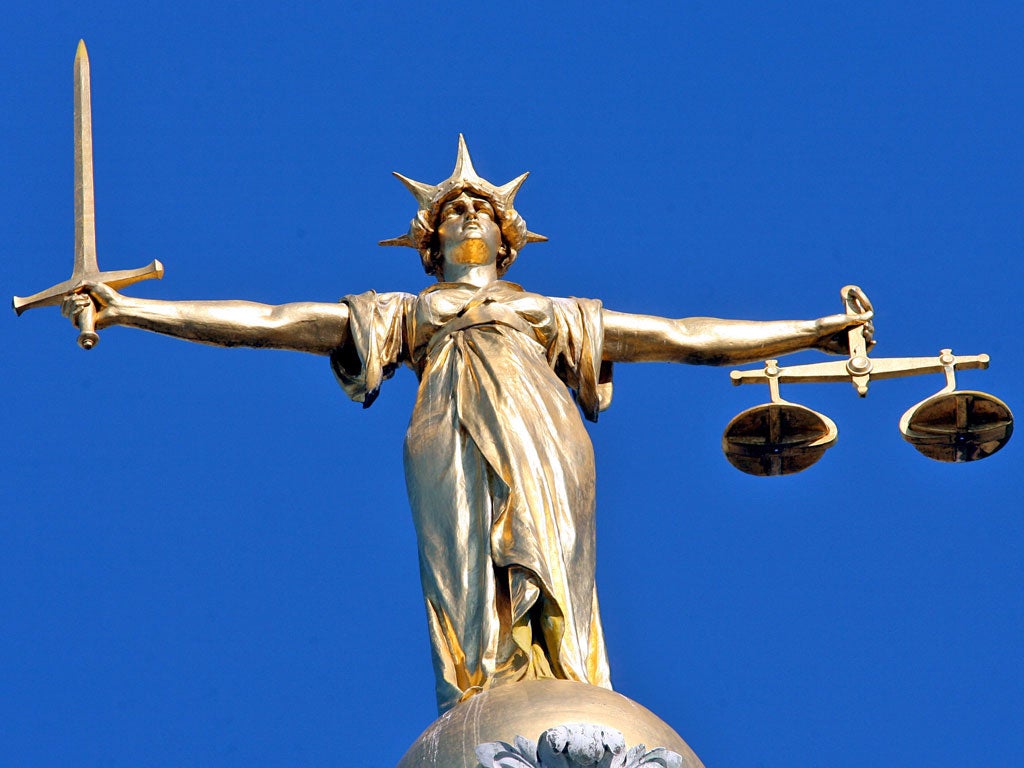Ban on filming in British courts to be lifted
Legislation allowing television cameras into major criminal trials to be announced in May

Television cameras are to be allowed into courts for the first time to film the sentencing of serious criminals.
The move, to be announced in the Queen's Speech in May, is designed to reduce the "mystique" of courtrooms and their sometimes arcane jargon, and to help the public re-engage with the criminal justice system.
Ministers and lawyers support the initiative and victims' groups have given it a guarded welcome, but some observers warn that broadcasters will inevitably concentrate on the most salacious and gruesome trials.
Under the plans, cameras will only be allowed in court to record judges' summing-up at the end of trials, as well as the sentencing. Broadcasters will not be permitted to film other parts of a trial, such as barristers' opening and closing statements or the cross-examination of witnesses – preventing showboating by lawyers, defendants and witnesses. Nor will be cameras be present at the moment when juries deliver their verdict.
Whitehall sources confirmed last night that the plans would be included in the Queen's Speech on 9 May, stressing they would be strictly limited, introduced first in Court of Appeal proceedings and then in Crown Court prosecutions. They said the Government was determined to stop trials becoming US-style television spectacles and to protect the identities of witnesses, victims and jury members.
Photography is banned in courts under a parliamentary Act of 1925 – four years before the first television broadcast in Britain.
The initiative – strongly supported by David Cameron – follows lobbying by the BBC, ITN and Sky News. In a joint letter last month they argued: "The ability to witness justice in action, in the public gallery, is a fundamental freedom. Television will make the public gallery open to all."
Supporters argue that public awareness of the judicial system has been piqued by the hacking scandal – through the Leveson Inquiry and the appearances of Rupert and James Murdoch before Parliament.
Televised proceedings have also been backed by the Director of Public Prosecutions, Keir Starmer, because it would allow the public to "see justice".
John Battle, head of compliance at ITN, said the reform would bring England and Wales into line with many other countries, including Scotland, where cameras have been allowed in courts under limited circumstances for nearly 20 years. "The public in this country see justice being done all over the world but they don't see it in their own," he said. "It will bring greater engagement between the public and the judicial system."
Baroness Kennedy, a barrister and Labour peer, said she backed allowing cameras into civil hearings, such as the Leveson Inquiry, but had "considerable reservations about cameras in criminal courts". She said: "These cases are salacious, they catch the public imagination and so it will be cases that are titillation, that are gruesome and I think it actually isn't conducive to justice.
"What happens is people tune into the small bits that appear in the news and think they know what the case is about and in fact haven't heard all the evidence. The cameras don't stay for the difficult, complicated stuff... So they don't get the complete picture but they think they do."
John Whittingdale, chairman of the Culture Select Committee, said the public had benefited from being able to view its high-profile hearings. "It is a fundamental principle of justice seen to be done," he said.
A spokesman for Victim Support said: "There may be a case for broadcasting some trials, or parts of trials, but witnesses in criminal trials should never appear on camera against their wishes. The justice system does need to be more transparent and accessible. But this does not mean that court cases should become a new form of reality TV. Any move towards an increased role for the media needs safeguards to protect victims and witnesses."
A Ministry of Justice spokesman said: "Open justice is a longstanding and fundamental principle of our legal system. Justice must be done and be seen to be done if it is to command public confidence. The Government and judiciary are determined to improve transparency and public understanding of courts. That is why we announced in September that we are planning to remove the ban... as soon as parliamentary time allows."
In the frame: Why ban came in
Concerns about newspapers publishing sensationalist photographs of notorious murderers led to the ban on cameras in court 100 years ago.
The most famous case was in 1912 when Frederick Seddon, convicted of poisoning one of his tenants, was filmed being sentenced to death. Similar cases followed, and in 1925 photography was banned by Parliament – along with the practice of making sketches inside a court, meaning that to this day legal artists have to move to another building before drawing their pictures of defendants, witnesses and judges from memory.
The Criminal Justice Act 1925 came to be interpreted as a ban on filming as well as taking still photographs.
Rob Hastings
Join our commenting forum
Join thought-provoking conversations, follow other Independent readers and see their replies
Comments